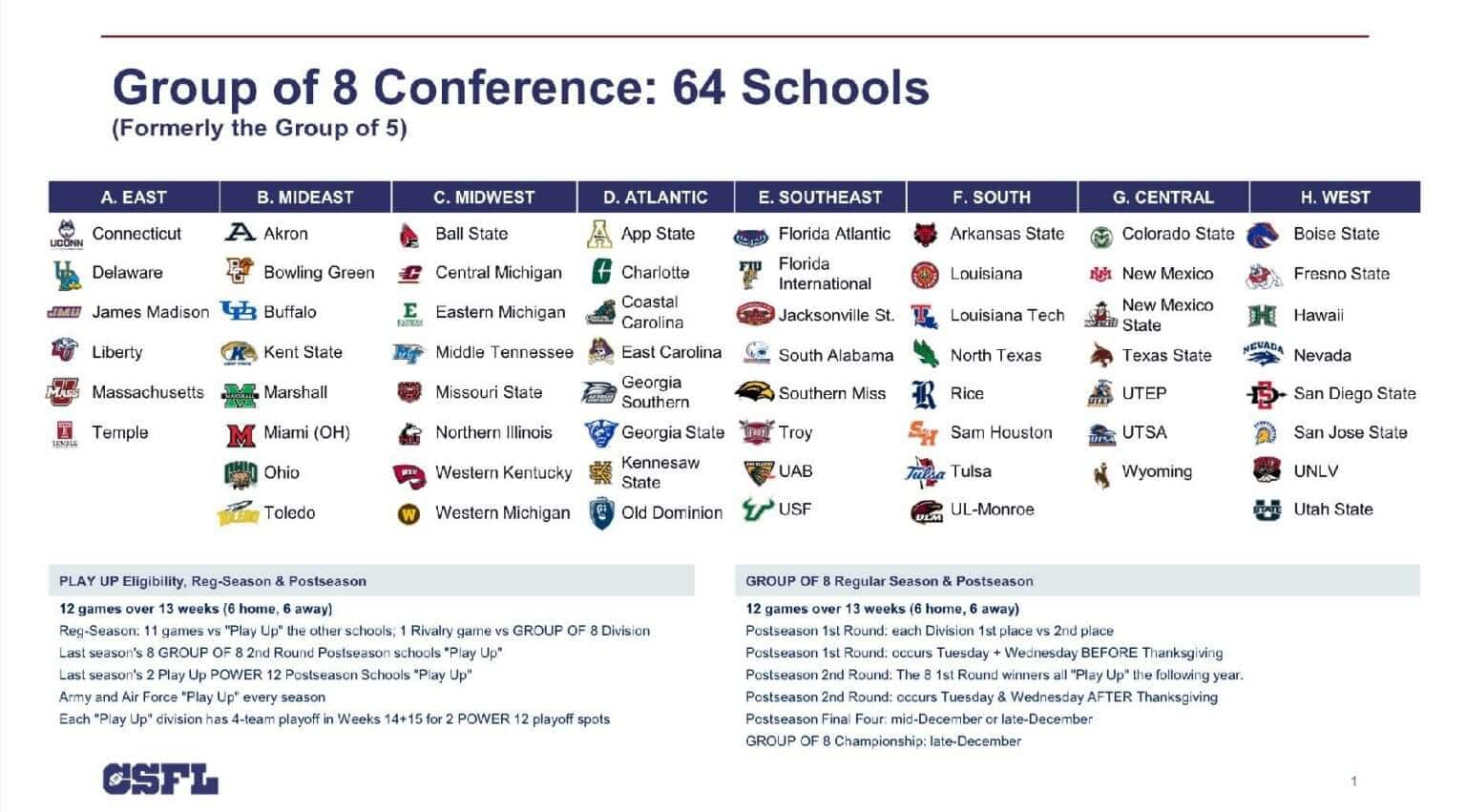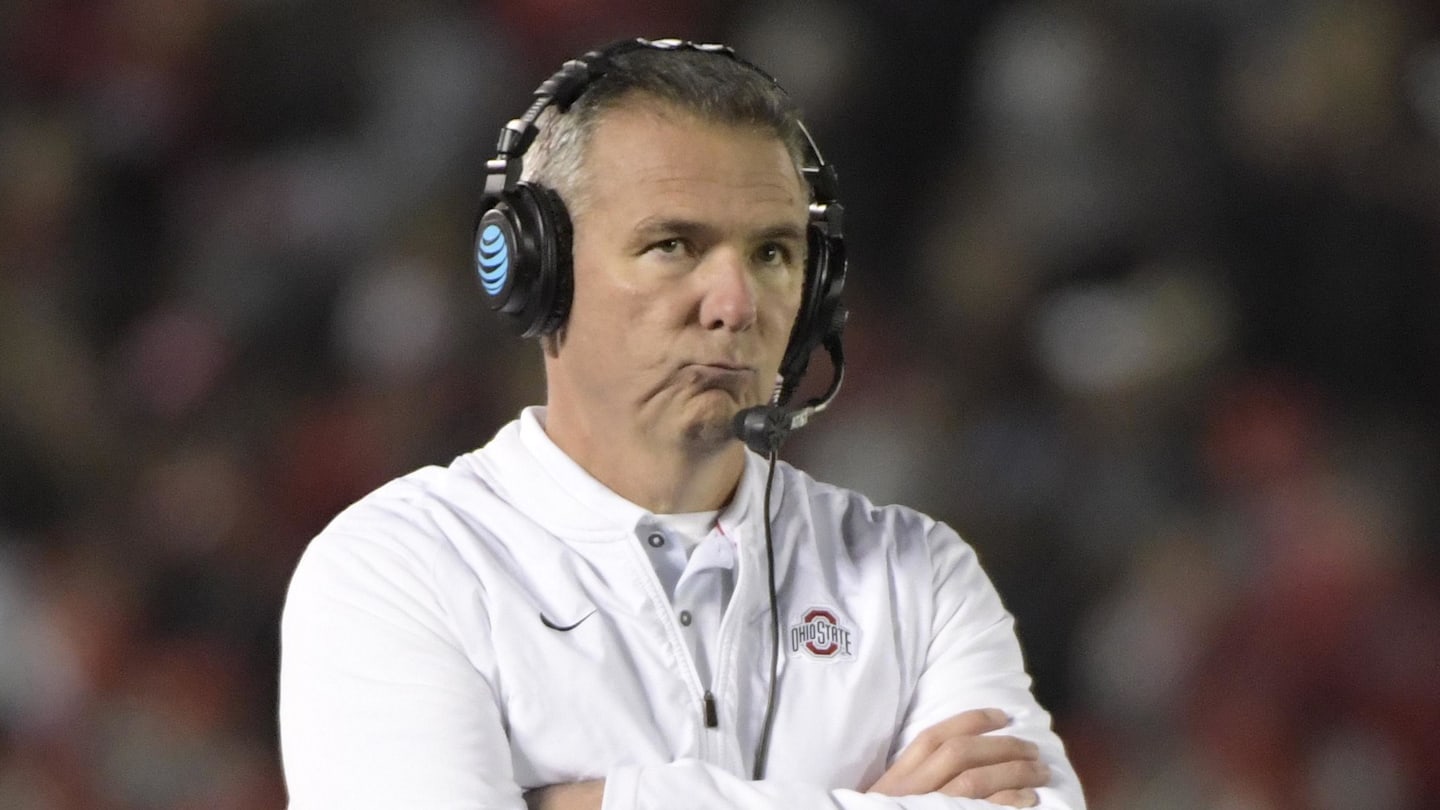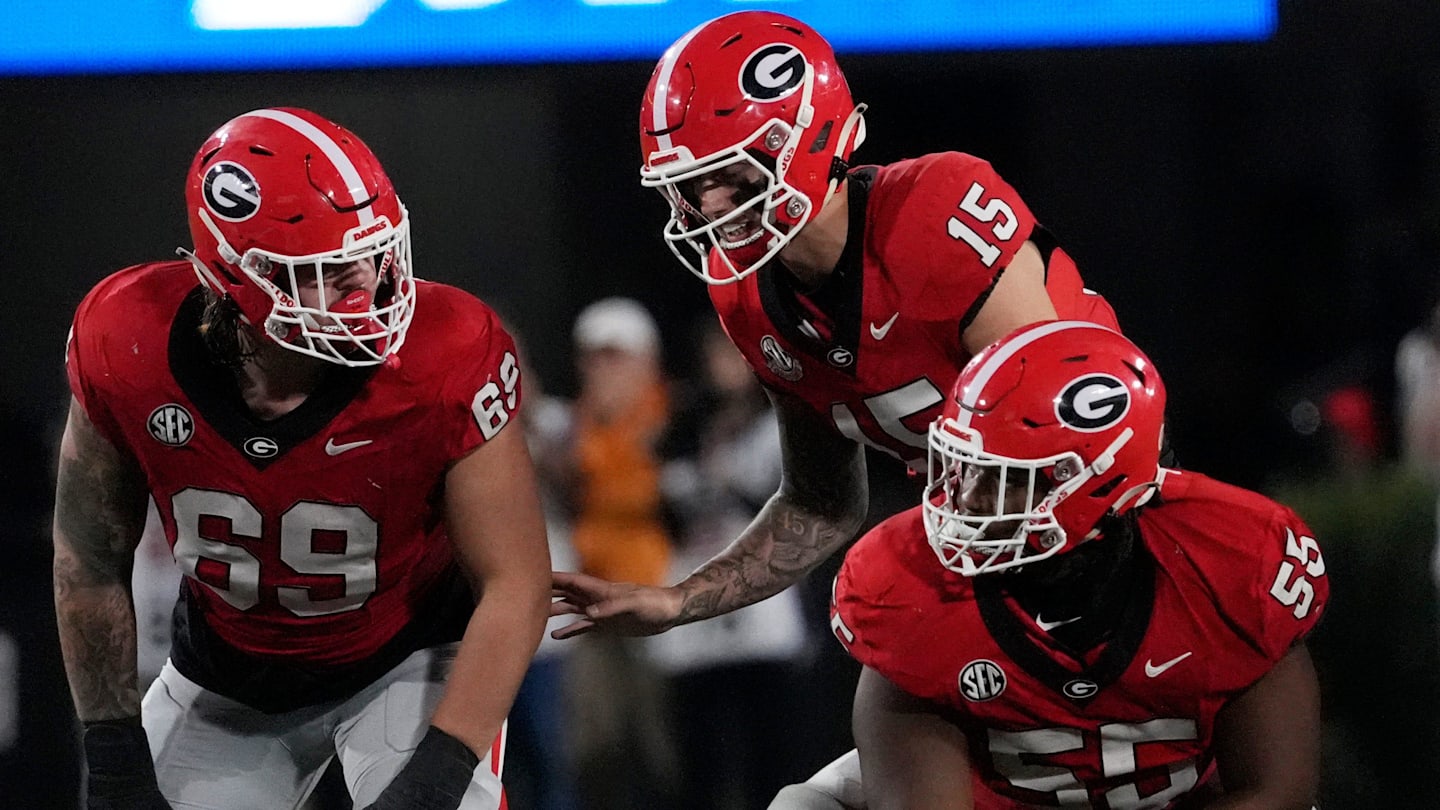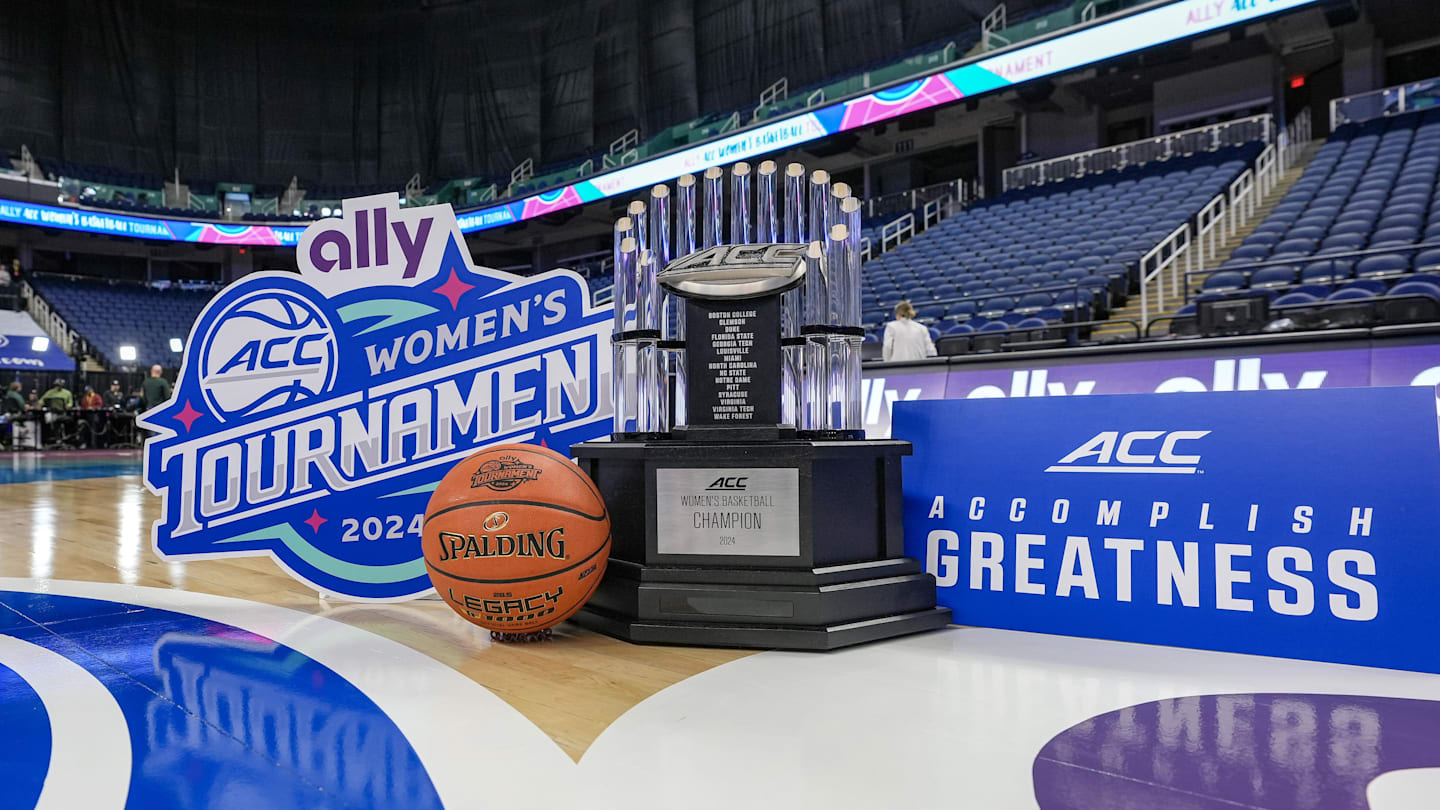Proposed college football ‘Super League’ details unveiled

College Sports Tomorrow, which is a group of executives and administrators, has proposed streamlining college football into a “Super League” called the College Student Football League (CSFL).
Details of the plan have been in the works for months, but were unveiled by the group on Tuesday. The plan includes the reorganization of the 136 Football Bowl Subdivision (FBS) schools into two conferences. The top 72 programs in the country would compete in the Power 12 Conference, which would be made up of 12 six-team divisions based on geography.
Names of those divisions, based on regions, include East, Mideast, Great Lakes, Midwest, Carolinas, Midsouth, Southeast, South, Plains, Texas, Southwest, and West.
The remaining 64 teams, most of which make up the current Group of 5, would compete in the Group of 8 Conference. Divisions in that conference include East, Mideast, Midwest, Atlantic, Southeast, South, Central, and West.
According to the release, some of the top teams in the Group of 8 would be eligible for promotion to the Power 12 Conference the following season, but there would be no relegation of schools from the Power 12 to the Group of 8.
Below are graphics of the proposed conferences and divisions for each team.



Below are more details on the College Student Football League from the the official release:
The CSFL would apply only to football; other college sports would stay in their current conferences or return to their traditional, geographic conferences, reducing the need for other sports to travel cross-country. The CSFL would include all the current FBS schools in two conferences made up of geography-based divisions. The top 72 programs would compete in the Power 12 Conference with the remaining 64 schools facing off in a second conference, the Group of 8. The best eight schools in the Group of 8 would have the opportunity to “play up” into the upper tier the following season, enabling promotion without “relegation” of any of the Power 12 schools.
Centralized, results-based league scheduling, including non-division games played between schools with similar records from the prior season, would ensure more competitive matchups and allow more schools to stay in the hunt deeper into the season. It would also allow results on the field, not a committee, to determine playoff participation, which in turn would generate more fan engagement in more parts of the country all the way through the regular season and postseason. The College Football Playoff (CFP) would be folded into CST’s proposal so a single league could be charged with managing and growing college football at all 130+ FBS schools.
“The CSFL’s format is better for schools, student-athletes, fans and media partners because more schools will be in the hunt for the playoffs well into November, unlike under the current system in which most schools are out by October,” said Jimmy Haslam, longtime University of Tennessee philanthropist and owner of the Cleveland Browns and other sports teams. “Historically, the beauty of college football has been how many schools around the country were competing for the championship. We need to bring college football back to the broad, national model of its golden years in a system which fosters more competitive balance.” said Haslam.
The CSFL model would be economically advantageous and sustainable in the short- and long-term. Consolidating and centralizing college football allows greater revenue to flow into one unified league, enabling universities to fairly compensate players, create reasonable competitive balance, cover rising NIL costs and continue to underwrite other intercollegiate sports that generate less revenue, including women’s sports and the U.S. Olympic program. The CSFL would directly compensate all student-athlete football players, not just the stars, and NIL and transfer portal rules would be the product of collective negotiations between the CSFL and an association representing football student-athletes. The CSFL supports legislation seeking a determination that student-athletes are NOT employees, but through collective bargaining, the CSFL would give players a voice in rules and economics while providing protection from antitrust claims via the “non-statutory labor exemption,” rather than through a formal, legislative antitrust exemption. This approach should provide a permanent solution to the myriad antitrust challenges plaguing college sports.
Although the idea sounds good on paper, it’s very doubtful that this proposal could be implemented anytime soon. Each FBS conference would have to agree on the change, and then there are the existing television contracts, some of which already extend into the early 2030’s.
What do you think? Is the CSFL a good idea and will it eventually become a reality?
Related
Urban Meyer predicts College Football Playoff change, and the SEC…
College Football Playoff expansion appears to be imminent as the SEC and Big Ten look to use their combined power to redesign the format to their advantage.Whil
Chicago Bears Potentially Targeting Two Georgia Football Players in NFL…
The Chicago Bears could potentially be targeting two Georgia football players in the NFL draft.The NFL Combine is wrapped up and once college programs complete
Michigan State game at Ford Field changes MHSAA football finals…
Adjustments are coming to the Michigan High School Athletic Association football state finals once again in 2025.Michigan State football announced it will play
Florida football announces Pro Day date: Here’s who is participating…
Swampcast talks Florida basketball No. 1 seed chances for March MadnessThe Sun's Kevin Brockway and Noah Ram discuss Florida basketball and UF's chances for a N










